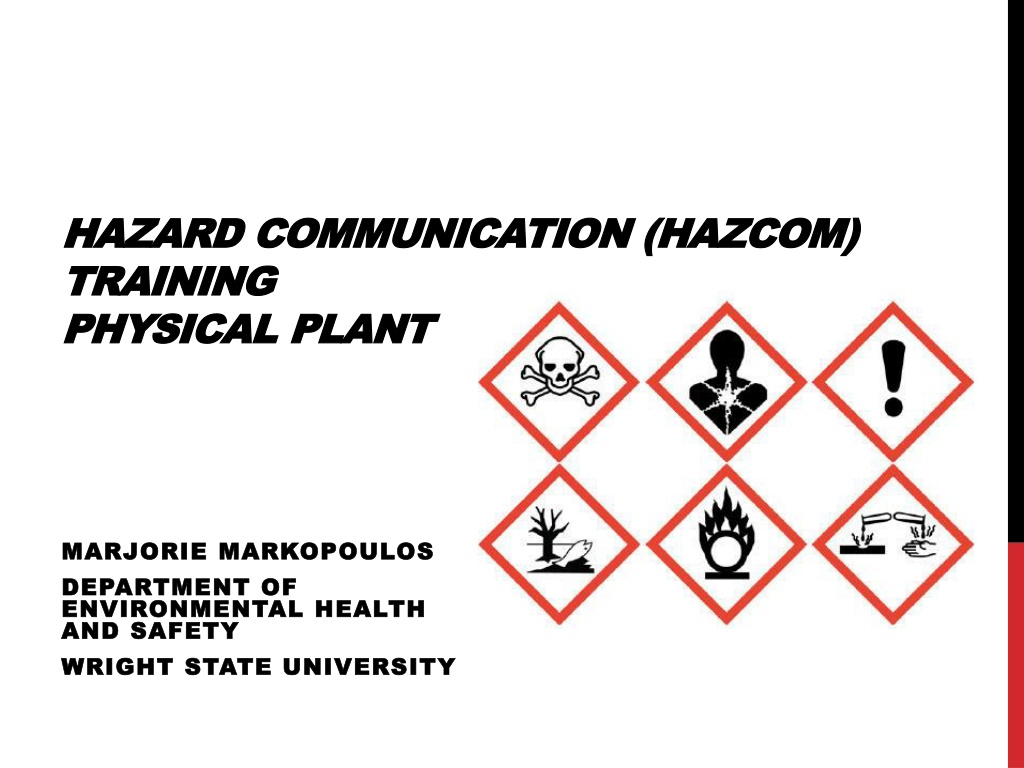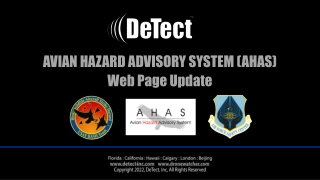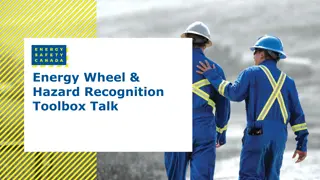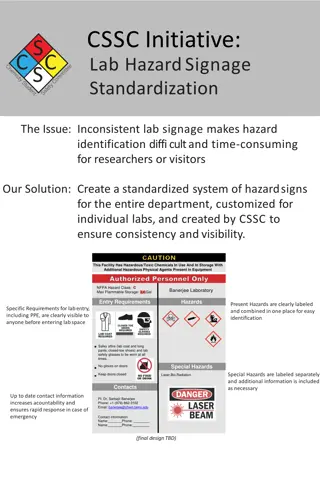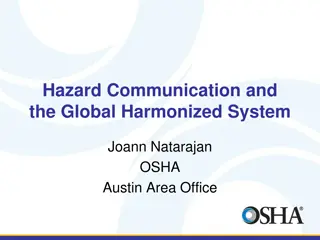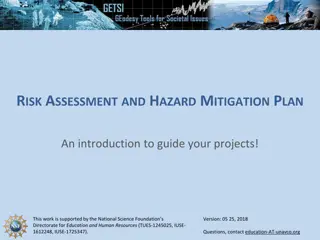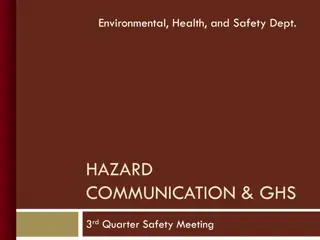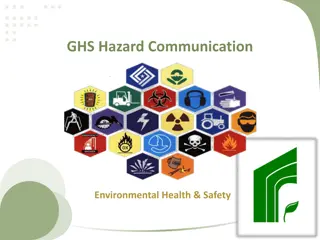Hazard Communication Training and Safety Data Sheets Overview
This resource provides detailed information on hazard communication training, safety data sheets (SDS), GHS format elements, HMIS and NFPA labeling systems, GHS symbols, and building safety precautions. It covers essential aspects such as hazard identification, SDS requirements, chemical labeling, GHS symbols, and emergency contact information.
Download Presentation

Please find below an Image/Link to download the presentation.
The content on the website is provided AS IS for your information and personal use only. It may not be sold, licensed, or shared on other websites without obtaining consent from the author. Download presentation by click this link. If you encounter any issues during the download, it is possible that the publisher has removed the file from their server.
E N D
Presentation Transcript
HAZARD COMMUNICATION (HAZCOM) HAZARD COMMUNICATION (HAZCOM) TRAINING TRAINING PHYSICAL PLANT PHYSICAL PLANT MARJORIE MARKOPOULOS MARJORIE MARKOPOULOS DEPARTMENT OF DEPARTMENT OF ENVIRONMENTAL HEALTH ENVIRONMENTAL HEALTH AND SAFETY AND SAFETY WRIGHT STATE UNIVERSITY WRIGHT STATE UNIVERSITY
5 ELEMENTS 1. Materials Inventory and Hazard Identification 2. Safety Data Sheets (SDSs) 3. Labeling 4. Training 5. Written Program
SDS REQUIREMENT: LOCATION OF SDS Wright State University Environmental Health and Safety Website MSDS link to Chemwatch program Hard copies in work area
THE 16 ELEMENTS IN THE GHS FORMAT FOR SAFETY DATA SHEETS ARE: 1. 2. 3. 4. 5. 6. 7. 8. 9. 10. Stability/reactivity 11. Toxicological information 12. Ecological information 13. Disposal 14. Transport information 15. Regulatory information 16. Other Substance & Supplier identification Hazard Identification Composition/ingredients First aid Accidental release measures Fire-fighting measures Handling and storage Exposure controls/personal protection Physical/chemical properties 4
HMIS AND NFPA Labeling and marking systems such as the Hazardous Materials Information system (HMIS) and the National Fire Protection Association 704 Fire Diamond system may also be used. These systems use color coding and a numerical rating system to identify the hazard and its severity. The numerical ratings that you may see on the NFPA Diamond are: 4 = Severe Hazard 3 = Serious Hazard 2 = Moderate Hazard 1 = Slight Hazard 0 = Minimal Hazard The color coding indicates: Blue Health Red Fire Yellow Reactivity White special hazards 5
GHS SYMBOLS Flame (Flammable/ Self-reactive/ etc.) Flame over circle (Oxidizing/ Organic peroxide) Exploding bomb (Explosives/ Self-reactive/ etc.) Corrosion Skull & crossbones (Acute toxicity) Exclamation Mark (Acute: lower level) Human Gas cylinder (Compressed gases) Environment (Aquatic toxicity) (Chronic: higher level)
Building and Room Number Department Access Warnings Special Hazards GHS Hazards Identification SafetyPrecautions Emergency Contact Information 8
DANGER Indicates: Hazardous situations with a high probability of death or severe injury. Is not used for: Property damage unless personal injury risk is present.
WARNING Indicates: Hazardous situations that have some probability of death or severe injury. OSHA Warning Sign Is not used for: Property damage unless personal injury risk is present.
CAUTION Indicates: Hazardous situations which may result in minor or moderate injury. Is not used for: Situations when there is a possibility of death or severe injury.
NOTICE Indicates: A statement of company or workplace policy as the message relates directly or indirectly to the safety of personnel or protection of property. OSHA Notice Sign Is not used for: Hazardous situations where death or severe injury may occur.
SAFETY FIRST Indicates: General instructions relative to safe work practices, reminders of proper safety procedures and the location of safety equipment OSHA Safety Sign
EXPOSURE ENTRY Four (4) Routes of Entry Inhalation (Breathing In) Absorption (Contact with Skin) Ingestion (Swallowing) Injecting
MSDS REQUIREMENTS: ROUTES OF ENTRY This information answers these questions: Is it hazardous to breathe the chemical in? Will the chemical cause irritation, burning or any other damage to the skin or eyes upon contact? Is it hazardous to swallow the chemical? What PPE (personal protection equipment) are required?
Evaluate hazard systematically Determine most effective control method(s) for the risk(s) associated with each. Eliminate the Hazard Substitute with a Lesser Hazard Engineering Controls to Reduce the Hazard Administrative Controls (Procedures) PPE PPE is the last and least reliable control HIERARCHY OF CONTROLS 16
AGENDA Elements of Right-to-Know Program Written Policies Chemical Inventories Labeling Material Safety Data Sheets Training and Safety Awareness Emergency Response to Chemical Spill 17
WHAT YOU NEED TO KNOW What You Need to Know Hazardous materials are all around us. They are found in paint, maintenance, cleaning and office products. Some may pose physical hazards and others may be health hazards but they will not pose a problem for you if you learn to use these materials safely. Employees have both a need and a right to know about the hazardous materials used in their workplace and how to safely use these materials. This information is included in the written hazard communication plan. The written hazard communication plan, chemical inventory, and MSDS for your department are in your supervisor s office. Other safety information is on our EHS website. 18
WHAT MUST EVERY CONTAINER HAVE? Answer: A label with the appropriate chemical names including a list of the hazards and the name and address of the manufacturer. If a label gets removed, destroyed or covered, you must put on a new label with the above information on it. Only containers that you fill and use over the period of one workshift may be without a label. The label provides an immediate source of information about a product s hazards. Additionally many labels contain information about storage, emergency procedures and safe handling of the product. 19
LABELING All chemicals (including solutions and chemicals transferred from their original containers) should be labeled with their common names, concentrations and hazards. Additional information such as: date received, date opened, date of expiration should also be recorded. Key words such as Caution , Warning and Danger are often used on labels to indicate the presence of a hazardous substance 20
SAFETY DATA SHEETS Every chemical you work with has a Safety Data Sheet. This is commonly referred to as an SDS". MSDS are available from the manufacturer for any chemical or mixture of chemicals used in industry. It is intended to provide workers and emergency personnel with procedures for handling or working with a substance in a safe manner. The SDS includes information such as physical data (melting point, boiling point, flash point, etc.), toxicity, health effects, First Aid, reactivity, storage, disposal, protective equipment and spill handling procedures. These are of particular use if a spill or other accident occurs. You should use the SDS in addition to the safety information on the label. 21
PRODUCT LABELING The labels of household products containing hazardous substances must bear at least the following information: Signal Word - The signal word "DANGER" on substances which are extremely flammable, corrosive or highly toxic. On those substances which are highly toxic, the additional word "POISON" must be included. The signal word"WARNING" or "CAUTION" on all other hazardous substances. Most labels will provide you with additional safety information to help you protect yourself while working with substances. This includes protective measures to be used when handling the material, clothing that should be worn, First Aid instructions, storage information and procedures to follow in the event of a fire, leak or spill. Read product labels before using a product for the first time. If you don't understand the label or still have questions about the product, contact your supervisor before using.Never remove or deface labels unless container is empty and there is no longer any hazard from the product. 22
How do Chemicals Enter Your Body? Inhalation -- Chemicals in the form of gases, mists, fumes and dusts entering through the nose of mouth can be absorbed through the mucous membranes of the nose, trachea, bronchi and lungs Skin Absorption -- Although skin is an effective barrier for many chemicals, it is a common route of exposure. Once the skin is penetrated, the chemical enters the blood stream and is carried to all parts of the body Ingestion --Ingestion involves chemicals entering the body through the mouth. Chemical dusts, particles and mists may be inhaled through the mouth and swallowed. They may also enter through contaminated objects, such as hand or food that come in contact with the mouth 23
ACUTE VS. CHRONIC What is the Difference Between an "Acute" and "Chronic" Exposure? Acute: Acute health effects are characterized by sudden and severe exposure and rapid absorption of the substance. Normally, a single large exposure is involved. Acute health effects are often reversible. Examples: carbon monoxide or cyanide poisoning. Too large a dose in a short time period can cause immediate response such as nausea, irritation, skin burns and anesthetic effects. This is an acute effect and is normally repaired by the body in a short time period. Chronic: Chronic health effects are characterized by prolonged or repeated exposures over many days, months or years. Symptoms may not be immediately apparent. Chronic health effects are often irreversible. Examples: lead or mercury poisoning, cancer. 24
TOXICITY VS. DOSE Toxicity is the degree to which a substance or a mixture of substances can harm humans or animals. Dose is the AMOUNT of something you are exposed to or come in contact with. A toxic chemical is only hazardous if it is not used properly. It is important to evaluate how much of a particular chemical you use and how long you use it during a work day. The concept of how much and how long is referred to as the DOSE. Almost any chemical can have harmful effects if the dose is large enough. The body can eliminate or detoxify most chemicals if the dose is not too high. Less toxicity the greater the dose you can tolerate without ill effects. Greater toxicity the less dose you can tolerate without becoming sick. 25
PERSONAL PROTECTIVE EQUIPMENT (PPE) Personal Protective Equipment Personal protective equipment, or PPE, is designed to protect employees from serious workplace injuries or illnesses resulting from contact with chemical, radiological, physical, electrical, mechanical or other workplace hazards. Personal protective equipment includes: Eye protection Gloves Respirators Hearing protection Safety shoes Wear approved Personal Protective Equipment (PPE) when handling chemicals. Your supervisor should have an assortment of PPE available and can assist with selection. 26
PPE - GLOVES Gloves are a simple and effective way to protect yourself from chemical contact. There are many different types of glove available including: Butyl Cotton Latex Leather Neoprene Nitrile PVC Rubber Viton There is no one glove material that will provide protection against all chemicals. You must select a glove that is resistant to the specific material you are using. Inspect gloves for small holes or tears before use. 27
SAFETY GLASSES VS. GOGGLES Safety glasses can provide protection from impact with flying particles. Chemical splash goggles are necessary when there is danger of a hazardous material such as an acid splash in the eye. Ventilated goggles allow air circulation while providing protection against airborne particles, dust, liquids or light. Ventilated goggles are vailable with either "Direct" or "Indirect" ventilation. Where strenuous work is done in hot conditions, "direct ventilation" goggles may be more suitable. However these are unsuitable for protection against chemicals, gases and dust. "Indirect ventilation" goggles are not perforated, but are fitted with baffled ventilators to prevent liquids and dust from entering. Indirect ventilation goggles will not protect against gas or vapor exposure. A face shield can provide protection for your entire face but should only be used in combination with other eye protection. 28
CHEMICAL EXPOSURE TO BODY Make sure you know the location of the nearest eyewash and safety shower. In the case of an exposure, if you need to use a safety shower, make sure that you remove contaminated clothing and flush for at least 15 minutes once the shower has been activated. Chemicals can continue to affect your skin or eyes even if you can no longer feel an exposure sensation. Emergency showers will continue to flow until purposeful steps are taken to stop the flow. Grabbing the shower handle and firmly pushing upward on this handle should stop the flow of water 29
CHEMICAL EXPOSURE TO EYES Remove any contact lenses immediately if a chemical or other substance gets into your eye. The contact can hold the substance to the eye, causing additional damage. Use your thumb and forefinger to open your eyelids. This ensures effective washing behind eyelids. Wash from nose out to ear to avoid washing chemicals back into eye or into an unaffected eye. Eyewash stations are designed to deliver continuous flushing under gentle pressure to ensure that the substance is flushed from your eye. Continue to rinse for 15 minutes. http://www.youtube.com/watch?v=E836nc7SjiI 30
GENERAL SAFETY PRINCIPLES GENERAL SAFETY PRINCIPLES WHEN WORKING WITH CHEMICALS WHEN WORKING WITH CHEMICALS Precautions should be taken to avoid exposure by the principal routes -- contact with skin and eyes, inhalation, and ingestion. It is prudent to minimize all chemical exposures: even for substances of no known significant hazard. Skin contact should be avoided. Wear appropriate personal protective equipment. Gloves, safety glasses or goggles No eating, drinking or smoking anywhere chemicals are present. Wash your hands thoroughly and frequently whenever working with chemicals. 31
GENERAL SAFETY PRINCIPLES GENERAL SAFETY PRINCIPLES WHEN WORKING WITH CHEMICALS WHEN WORKING WITH CHEMICALS Hazardous by-products can be created by mixing chemicals. An example of a hazardous by-product would be chlorine gas which is formed when bleach and ammonia are mixed. When inhaled in small doses, the gases resulting from mixing these products can cause lung irritation, sore throats, headaches and difficulty in breathing. Higher levels of exposure can cause chest pain, more severe breathing difficulties, vomiting, pneumonia, and fluid in the lungs. In very large doses, the gas can be deadly. Do not mix any cleaning products, especially those containing bleach. When using any chemicals, even those that are considered safe, make sure that adequate ventilation is provided so you do not breathe in too many fumes. 32
EMERGENCY RESPONSE: MAJOR SPILLS (LESS THAN 8 OZ. OF A KNOWN MATERIAL) Minor spills may be controlled and cleaned up by employees who work with the substance and understand the hazards of the material following these steps: Alert people in the immediate area of the spill; Wear protective equipment, including safety goggles, gloves and a long-sleeved shirt or other protective clothing; If spilled material is flammable, turn off ignition and heat sources. Avoid breathing vapors from the spill; Apply spill pillow/pads or other absorbent material, first around the outside of the spill, encircling the material, then absorb to the center of the spill; Sweep/shovel up absorbent material and place into a sealed, leak-proof bag or container; 33
EMERGENCY RESPONSE: MAJOR SPILLS (MORE THAN 8 OZ. OR UNKNOWN MATERIAL) Attend to injured or contaminated persons and remove them from exposure as practical. Remove any ignition source (if safe to do so). Alert other persons in the area to evacuate. Close the doors to the affected area. Contact the University Police for assistance: From any hard-wired campus phone dial 911. From a cellphone, dial 937-775-2111. You will be connected to a Wright State Police Department Dispatcher. Give your name, information on the material spilled (name, quantity, etc) and the exact location of the spill (room, floor, etc.). Be sure to stay on the phone until released by the emergency operator. Report to the building entrance to provide information to and/or assist emergency personnel. 34
ACCIDENT/ INJURY/ INCIDENT REPORT For any accidental chemical exposure requiring medical assistance, it is important to pass the MSDS on the chemical or chemicals to the paramedics or attending physician. This information will assist them in your treatment. The MSDS is available from your supervisor. Complete the appropriate report within 24 hours of accident or injury if possible. The form must be reviewed and signed by your supervisor. Completing this paperwork initiates the process for any Workers Compensation claim 35
QUIZ 1.The purpose of the Chemical Right-to-Know (RTK) Program is: (check one) to protect employees from slips, trips and falls to communicate information about hazardous chemicals to employees to conduct an electrical safety program 2.Who do you contact FIRST if you need a new Material Safety Data Sheet (MSDS), or an MSDS is missing? 1. 2. 3. Your supervisor University Safety and Assurances Product Manufacturer Human Resources 3.True or False. Every hazard presented by a chemical must be listed on the container label. 1. 2. 3. 4. 1. 2. True False 4.At a minimum, which of the following items must be included on all chemical containers (more than one answer may be correct)? Date of purchase Person responsible for item Name of chemical and hazards "This product is for institutional use only" 5.The purpose of labels is: (check one) 1. 2. 3. 4. 1. 2. 3. to provide detailed information about hazardous chemicals to give an immediate hazard warning to be kept on file in the supervisors office 36
QUIZ 1.The purpose of the Material Safety Data Sheet (MSDS) is: (check one) to provide detailed information about chemical hazards to employees, employers, health professionals and emergency personnel to provide marketing information to salesmen and customers to be fixed to containers as a short summary of hazards Both "a" and "c" 2.Safety glasses can provide protection from: 1. 2. 3. 4. 1. 2. 3. Flying particles Chemical Splashes Ultraviolet Light 3.If a placard has a red diamond containing the number "4" this alerts you that: It is highly flammable It reacts with water to form a toxic peroxide It is non-flammable. It may become unstable if shaken or dropped. 4.When you pour a chemical from it's original container to another container for immediate use (from a gallon into a squirt bottle, for example), the new container must be labeled with minimum of: 1. 2. 3. 4. The name of the chemical The name of the chemical and description of the hazards The name, the hazards, target organ(s) The name, the hazards, NFPA 704 label 5.What are the route of entry for chemical exposure?: 1. 2. 3. 4. 1. 2. 3. 4. Inhalation Ingestion Skin absorption All of the above 37
1.What measures can be taken to prevent hazardous products from being orally ingested? Prohibit eating and drinking in areas where hazardous chemicals are present Wash hands thoroughly at the end of each work shift Wear disposable gloves and discard after working with chemicals followed by washing your hands All of the above 2.What should you do in the event of a Major Spill? 1. 2. 3. 4. Evacuate the immediate area Notify a supervisor or proper personnel Remove any ignition source (if safe to do so) Stay away and secure the area All of the above 3.What personnel protective equipment (PPE) is available to help protect you against chemical exposure? 1. 2. 3. 4. 5. 1. 2. 3. 4. Gloves Safety Glasses Safety Goggles All of the above 4.The yellow portion of an NFPA diamond and HMIS label will represent: 1. 2. 3. 4. Flammability Hazard Health Hazard Reactivity Hazard Special Hazard Information 38
